Images and alt text
Images
Don’t use images containing text. This is because:
- The text size can’t be increased.
- The text can’t be read by screen readers.
- Magnifiers cause the text in images to become pixelated and unreadable.
The only exceptions to this are logos which often contain text.
All images, apart from decorative images, should have alt text. This describes the image and the information it conveys for people who use screen readers.
Don’t use animated GIFs on the web or in emails. They’re not easy to start and stop, which can cause issues for people with motion sensitivity. Use a static image in emails, or you might be able to use an embedded video on a webpage.
Alt text
Alt text explains what’s happening in an image and how it relates to the surrounding content. It’s read aloud to users by screen-reader software, and it’s indexed by search engines.
Alt-text is really important to make sure our social media is as accessible as possible.
As a really visual medium, we want to make sure everyone can enjoy and understand the content we’re posting on social.
It’s also vital that we present information accurately so blind or visually impaired people get the same information as everyone else.
Tips for writing good alt text
- Be specific and succinct – say what you see and use 130 characters or fewer.
- There is no need to start with “image of…” or “graph showing…”
- Think how you’d briefly describe the item over the phone.
- Adding keywords can help with SEO, but only use keywords if they’re directly relevant to the image – and don’t over-use them!
- Include any text that’s shown in the image.
- Don’t repeat yourself – if there’s a caption with the image, graph or infographic, you don’t need alt text too. (But it might be useful to follow these tips when writing your caption!)
- Alt text isn’t needed for ‘decorative’ images, in that case leave the alt text field blank.
Alt text examples
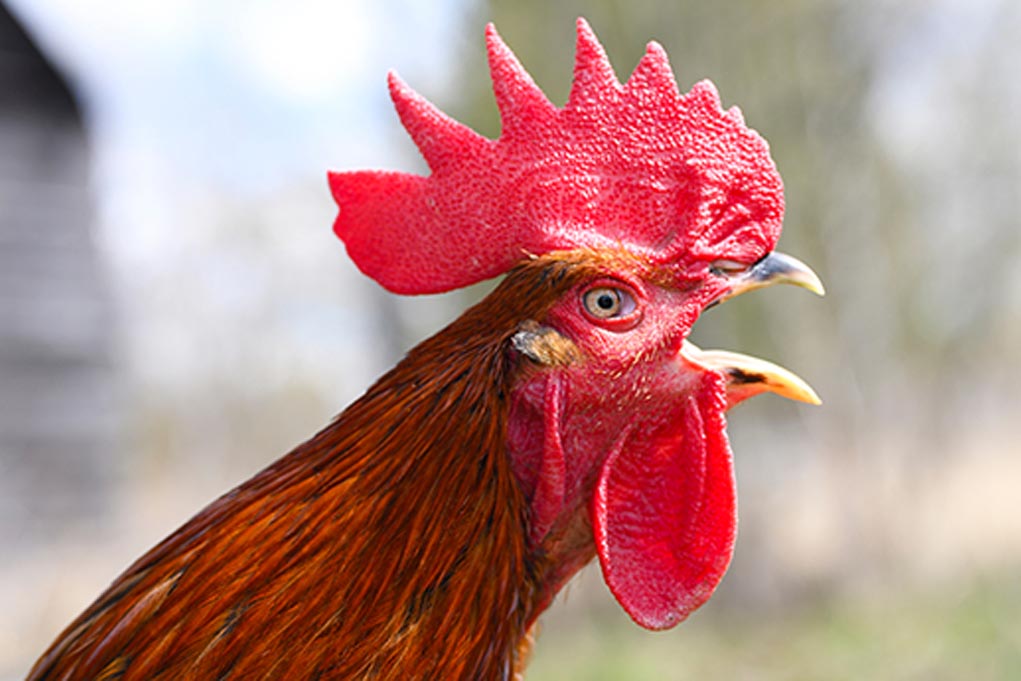

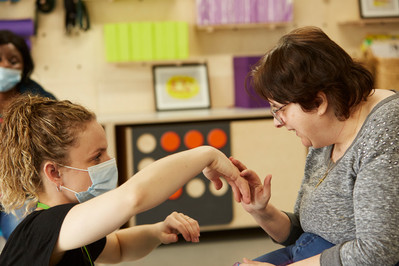
Ready to create?
Step 1 – don’t panic!
Most blind or visually impaired people will say that any alt text is better than none. We’re not aiming for perfection every time, but it’s important to be making the effort every time.
That being said there are a few things to consider before you get started.
Let’s start with some things to avoid.
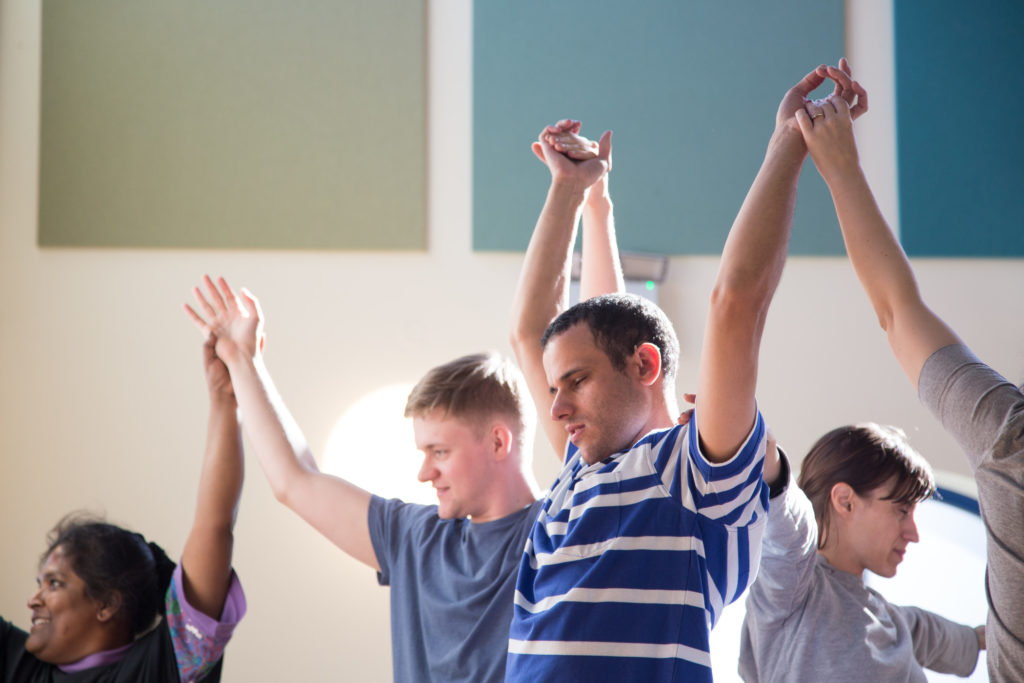
We’re trying to accurately and fully express what’s going on in an image, we don’t
want to try to convey information that is not contained within the pic.
For example, some people have tried to use alt-text to cram more information into something like a tweet. So don’t say something like:
“Adam taking part in one of our dance classes. You can find more information by visiting sense.org.uk”
There are other ways which people put non-contextual information into alt-text.
For example, you might be tempted to say something about the person or the location that you would not be able to discern just from looking at the image, e.g.:
“Adam, a massive fan of Love Island, taking part in a dance class in Touchbase Pears”
There is no way we could glean any of that information just from looking at the image – so it doesn’t belong in the alt-text!
Finally, we want you to provide as full a description as possible.
We don’t expect you to write that much, or expect someone to read it.
But our audience deserves more than just a cursory attempt at description. So avoid:
“A man in a room with his arms in the air”
So what do I write?
Generally we think most pictures we share fall into one of two categories. You will want to approach each of these categories slightly differently.
Portraits
With a portait, the focus is on the person/persons in the image, so describe them and their surroundings as fully as possible.
As the number of people in the photo increases, you can generalise a bit more. But, if there are 3 or less, describe the people in as much detail as possible.
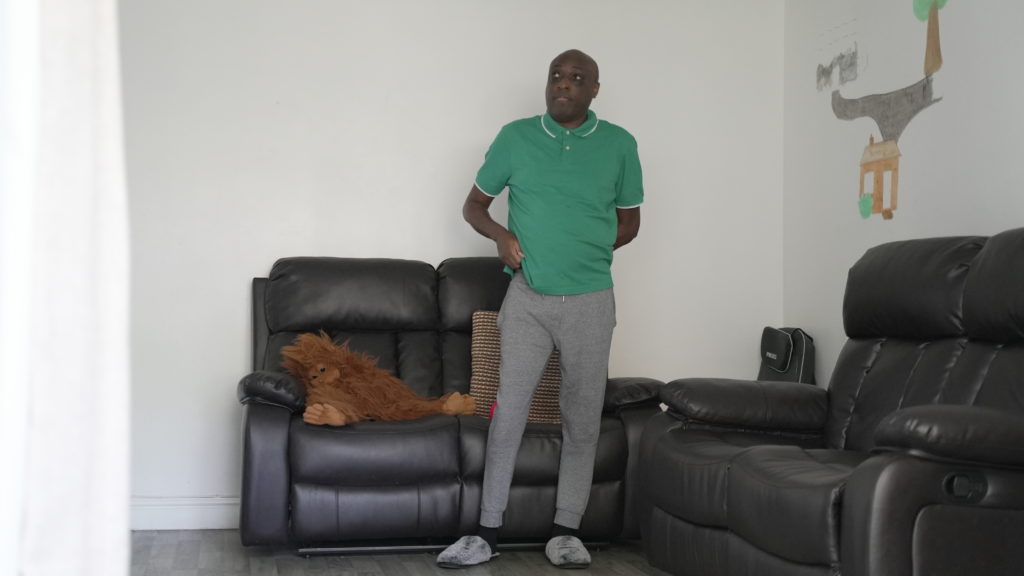
He has a shaved head and wears a green polo shirt with grey tracksuit bottoms and fluffy grey slippers.
Martin will probably be the focus of any social post this image is attached to, so he should be the primary focus of the alt-text too.
Action
For action shots, the most relevant information is what’s going on in the photo, so do your best to describe the activity and the environment in which it is taking place.
If you still think it’s important to describe people in shot, then do. But as the number of people involved increases it will become time consuming for the audience to digest if you describe everyone.
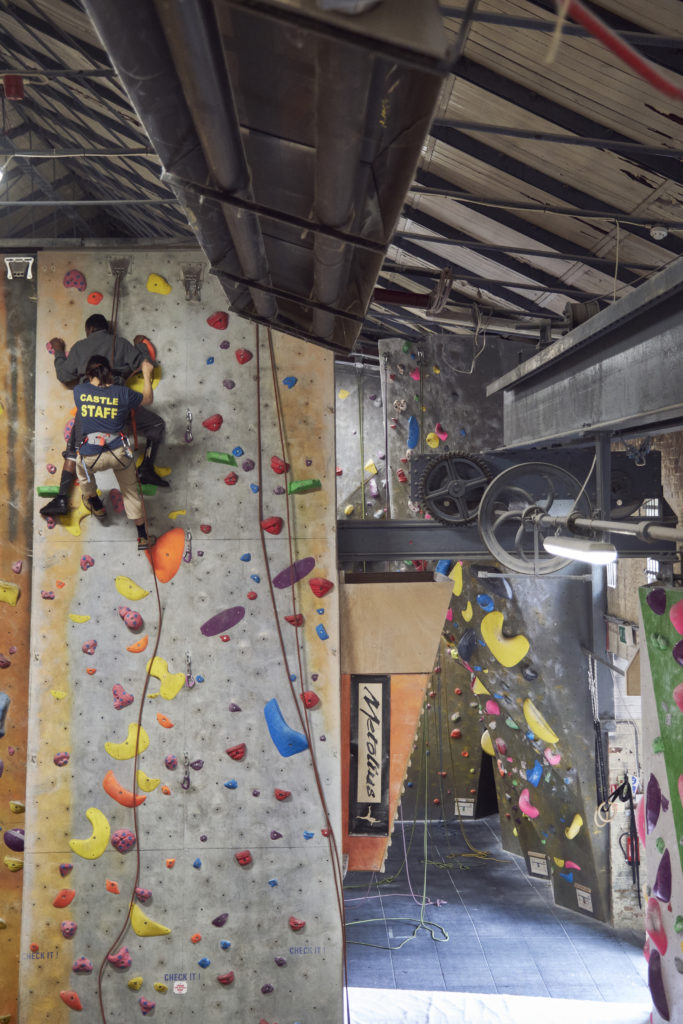
climb on. Two men are climbing the wall wearing harnesses.
Exceptions
Every rule has some exceptions! There’s also a few things you can do which may feel counterintuitive (based on the above guidance)
- There are times where some slight additional context may be useful. One key example of this is clarifying that one of the people in a photo is a support worker.
- Using proper nouns is fine. Rather than saying someone is standing in front of a “very tall clock tower” you can say “Big Ben”.
- Putting someone’s name (especially for portrait type images) is also fine. You can say “Susan, a young woman with long black hair wearing dark glasses… etc.”
That’s it!
Hopefully this has helped to get you started. Try to remember:
- It’s a bit more art than science. You won’t get it perfect every time and that’s OK! As long as you are trying your best to give as much information as possible.
- Focus on what’s important in the picture, if it’s a person give as much detail on them as you can, if it’s an action shot, make what’s going on the story.
- Avoid being overly descriptive and including details which you can’t see in the picture.
